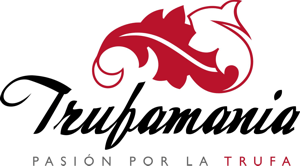THE FALSE TRUFFLES
People often ask us about "truffles" found around yards and gardens or in the countryside. They appear partially buried (hypogeous) or superficial. They are sometimes true truffles, but most of the time are false truffles, from a gastronomic point of view and and accepted as true truffles only those belonging to the genus Tuber. Even some of these false truffles can be toxic. Never eat any fungus unless you are absolutely sure of its identity!
The most frequently found species are:
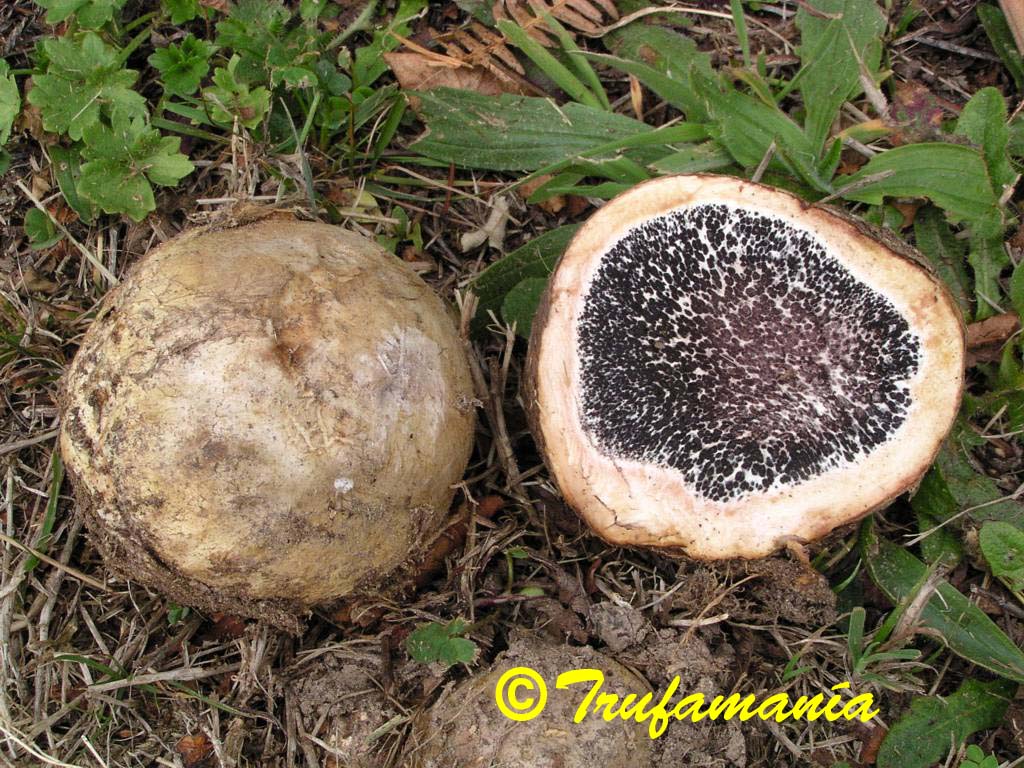 False truffles: Scleroderma polyrhizum |
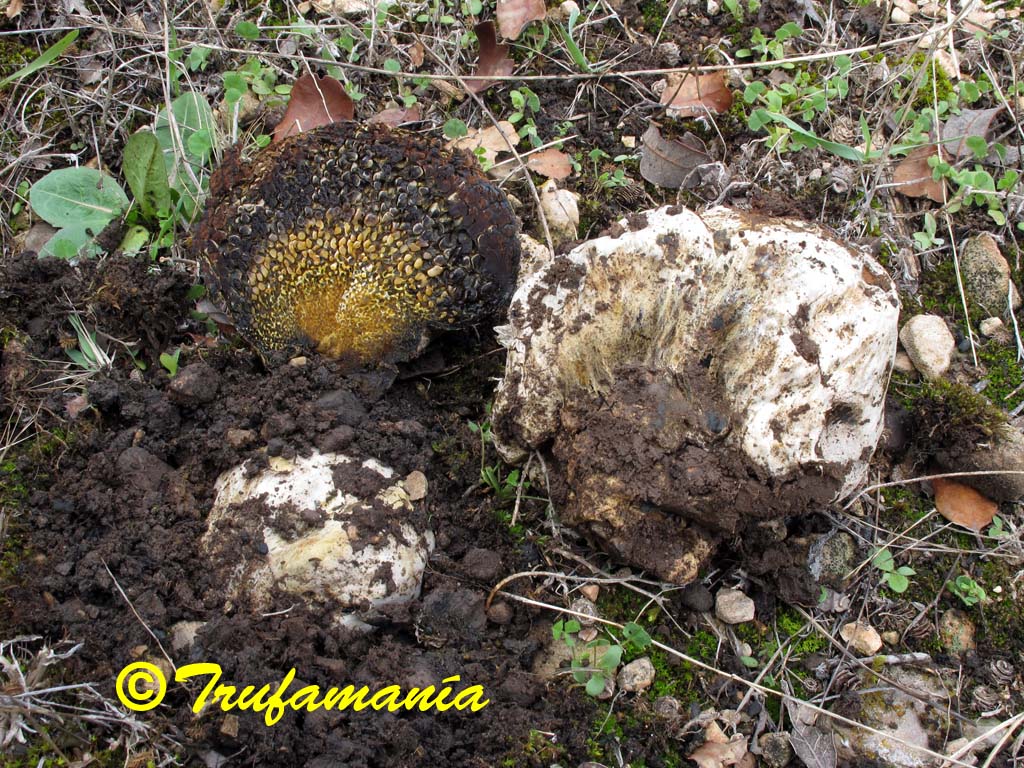 False truffles: Pisolithus arhizus |
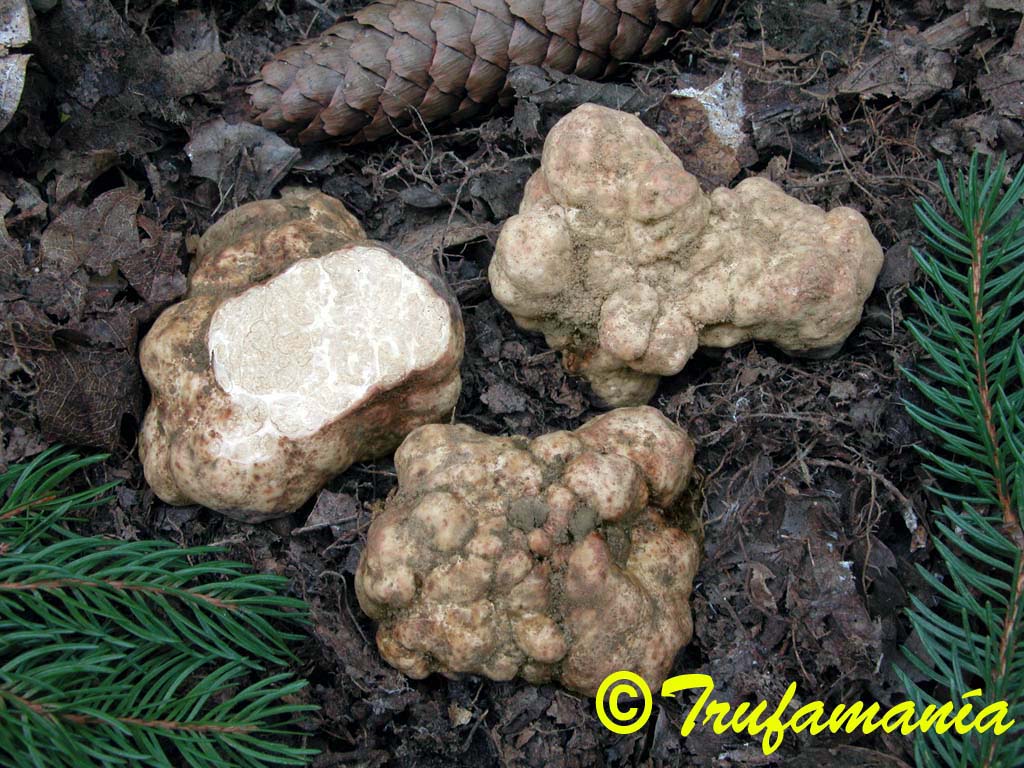 False truffles: Choiromyces meandriformis |
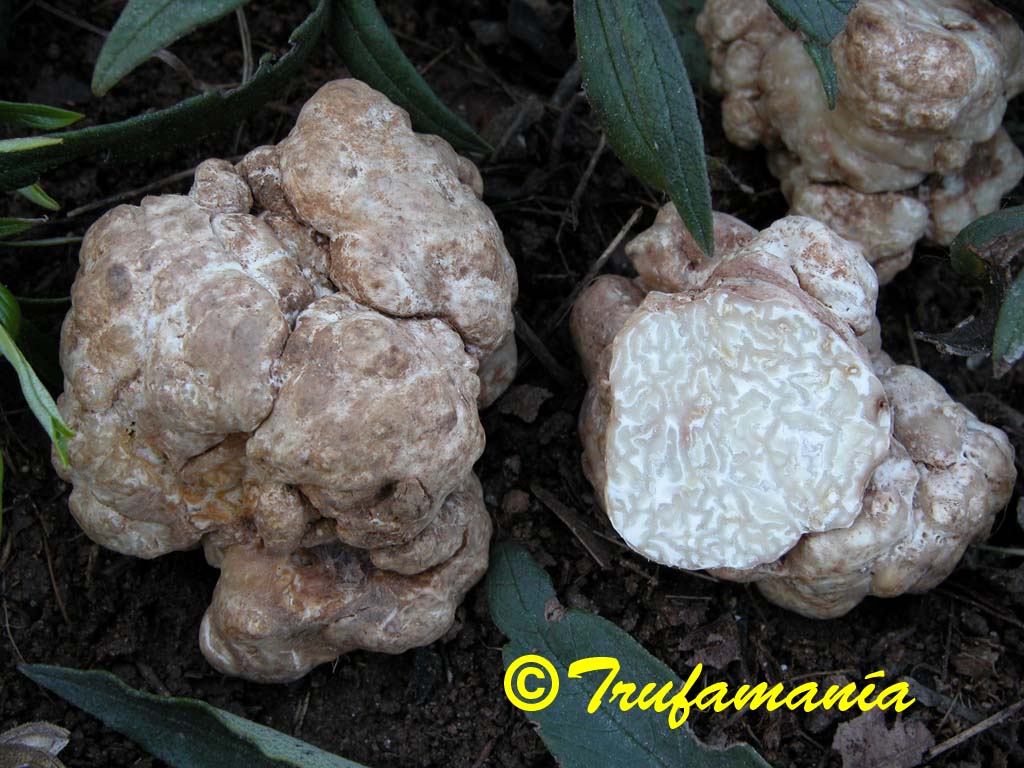 False truffles: Choiromyces magnusii |
SCLERODERMA POLYRHIZUM
It is a fungus that grows underground (like truffles), but eventually emerge though the soil surface to finish their development and open in star-shaped. It reaches a big size, 6-15 cm across before splitting, very tough and quite heavy. We can find them in open, sunny places, along the edge of woods or along the edges of roads and highways, where they are capable of pushing the asphalt. 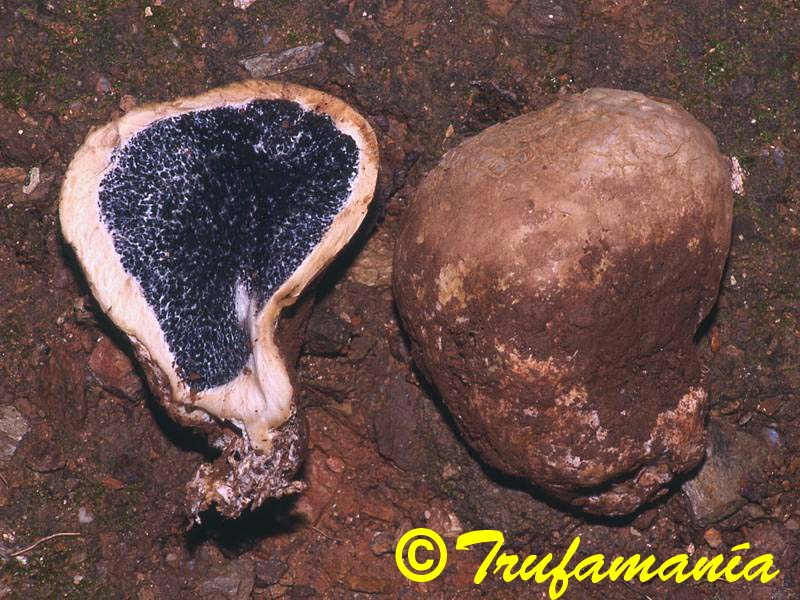 It is a widespread species found in North America and Europe. We were recently asked about some false truffles of Philippines that we also found to be Scleroderma polyrhizum.
It is a widespread species found in North America and Europe. We were recently asked about some false truffles of Philippines that we also found to be Scleroderma polyrhizum.
It is very easy to mistake a Scleroderma polyrhizum for a true truffle before splitting. In this case you need to cut the Scleroderma in half to see inside. Scleroderma polyrhizum has a very thick skin (peridium), hard and brown. The inside (gleba) is black to purplish black, marbled with whitish veins. Real truffles would never have such a thick skin!
All Scleroderma are considered toxic, producing gastrointestinal disorders. In Spain are included in Annex D (species that can not be traded commercially) of Spanish Royal Decree 30/2009 of 16 January 2009, laying down the health conditions for mushrooms trade for food. (Spanish)
Scleroderma polyrhizum is the species most often confused with true truffles.
PISOLITHUS ARHIZUS
Synonym Pisolithus tinctorius. This fungus is known in Australia as "the horse dung fungus" and in Europe as "the Bohemian truffle" (Böhmische trüffel). It is a fungus confused with true truffles because their initial underground growth. It is very easy to identify at this stage of its development if you cut the Pisolithus in half to see the inside (gleba). 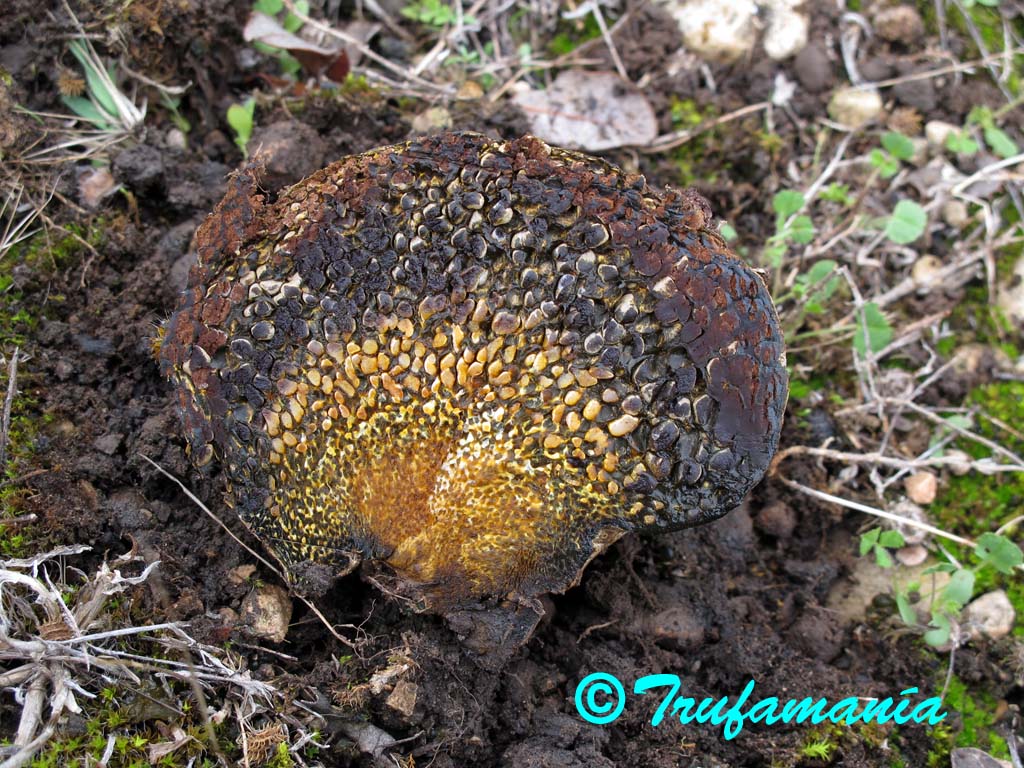 Then you can see as the glebe is composed of numerous small chambers with pea-sized spore packages (pseudoperidioles), changing in appearance and color as they ripen: yellow at bottom, blackish brown and juicy in the middle part, brown and powdery on top
Then you can see as the glebe is composed of numerous small chambers with pea-sized spore packages (pseudoperidioles), changing in appearance and color as they ripen: yellow at bottom, blackish brown and juicy in the middle part, brown and powdery on top
Pisolithus arhizus are very variable in external appearance as they ripen. In most cases people only see the Pisolithus fruiting bodies in the advanced powdery stage. It can reach 30 cm in height because of a pseudostipe.
Pisolithus can grow in very arid places. You often find them along the edges of roads and highways where they can even push up the pavement. It is a widespread species.
Pisolithus arhizus has been used as natural dye and it is considered edible when young. We have not ever tasted a Pisolithus. You have to admit that it does not look very appetizing...
CHOIROMYCES MEANDRIFORMIS
FULL DESCRIPTION. In Northern Europe it is known as Choiromyces venosus and eaten as a delicacy. However, it is considered toxic (gastrointestinal irritant) in Southern Europe. In Spain are included in Annex D (species that can not be traded commercially) of Spanish Royal Decree 30/2009 of 16 January 2009, laying down the health conditions for mushrooms trade for food.
They often protrude through the soil surface, in summer and autumn, and reach large sizes. These Choiromyces grow in acid soils with high rainfall and prefer clayey soils. 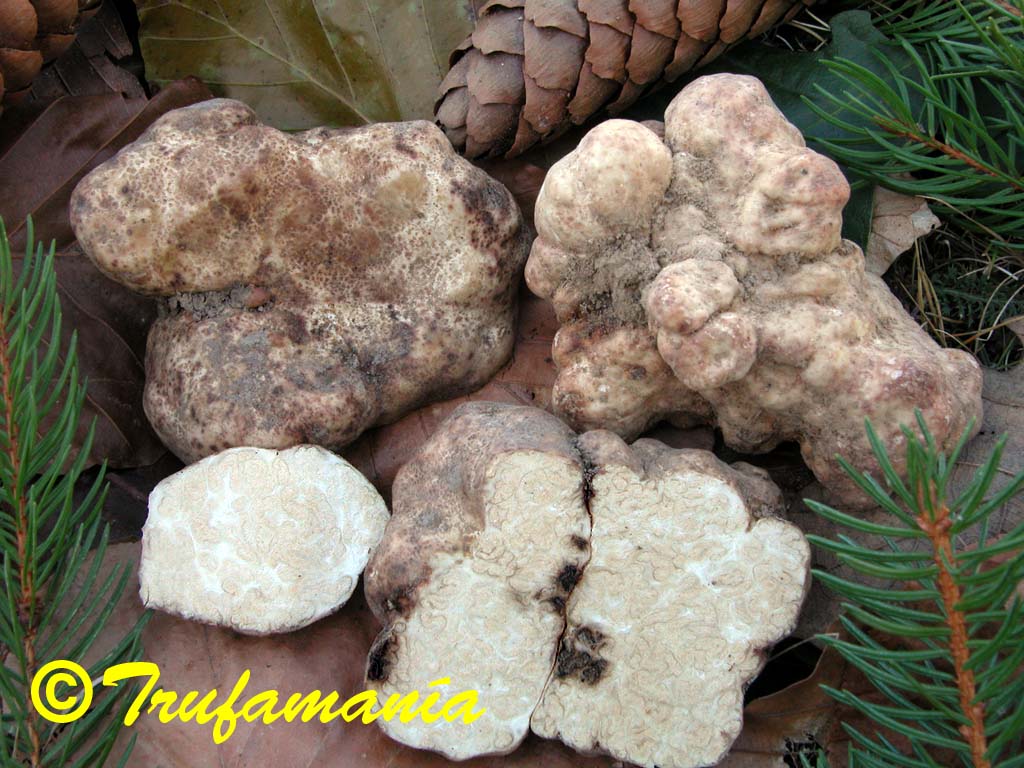 We have found them in Navarra associated with Quercus robur and in Hungarian under Picea abies.
We have found them in Navarra associated with Quercus robur and in Hungarian under Picea abies.
They are whitish to yellowish brown, with reddish spots at maturity, often irregular in form. The inside is white to cream or yellowish-brown, marbled with sterile, white, meander-like veins (which is the origin of the name meandriformis) surrounding the fertile areas.
Strong odor, distinctive, becoming unpleasant at maturity.
Because of its large size and whitish color, Choiromyces meandriformis is sold fraudulently as “white truffle” for its resemblance to Tuber magnatum, although their texture, aroma and flavor are completely different.
CHOIROMYCES MAGNUSII
FULL DESCRIPTION. They are highly prized in parts of Extremadura (Spain) and Andalusia (Spain). There, Choiromyces magnusii is known as "criadilla jarera" and eaten as a delicacy. It is a spring species that grows in acid soil and always associated with Cistus ladanifer. Although its development is hypogeous, 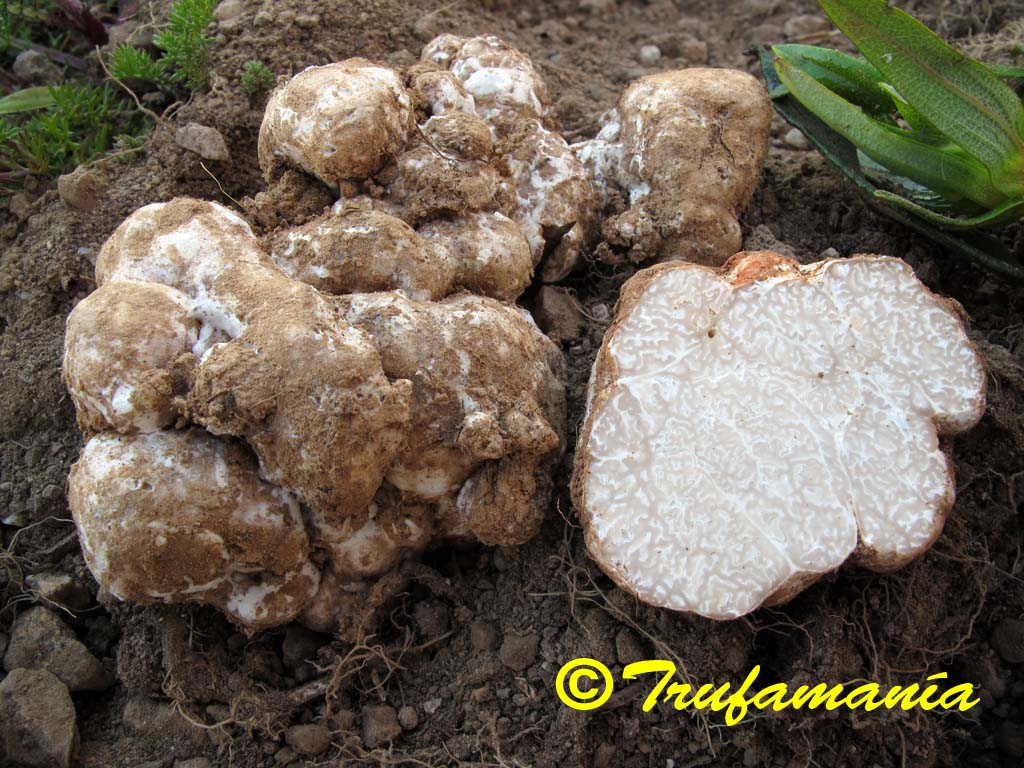 you can detect its presence through the cracks forming in the soil as they grow. They reach a large size, up to 10-12 cm, and are whitish to light brown, irregular in form, gibbous, lobed, with deep grooves that make them very difficult to clean when cooking. The inside is white to brown, depending on their maturity, marbled with sterile, white, sinuous veins, no completely surrounding the fertile areas.
you can detect its presence through the cracks forming in the soil as they grow. They reach a large size, up to 10-12 cm, and are whitish to light brown, irregular in form, gibbous, lobed, with deep grooves that make them very difficult to clean when cooking. The inside is white to brown, depending on their maturity, marbled with sterile, white, sinuous veins, no completely surrounding the fertile areas.
Faint odor, distinctive.
For several years, a gastronomic fair dedicated to this “truffle” is held in El Almendro (Huelva - Spain), in April. There, Choiromyces magnusii is known as “turma” and “white truffle of El Andévalo”
| Antonio Rodríguez trufamania@gmail.com antonio@trufamania.com |
